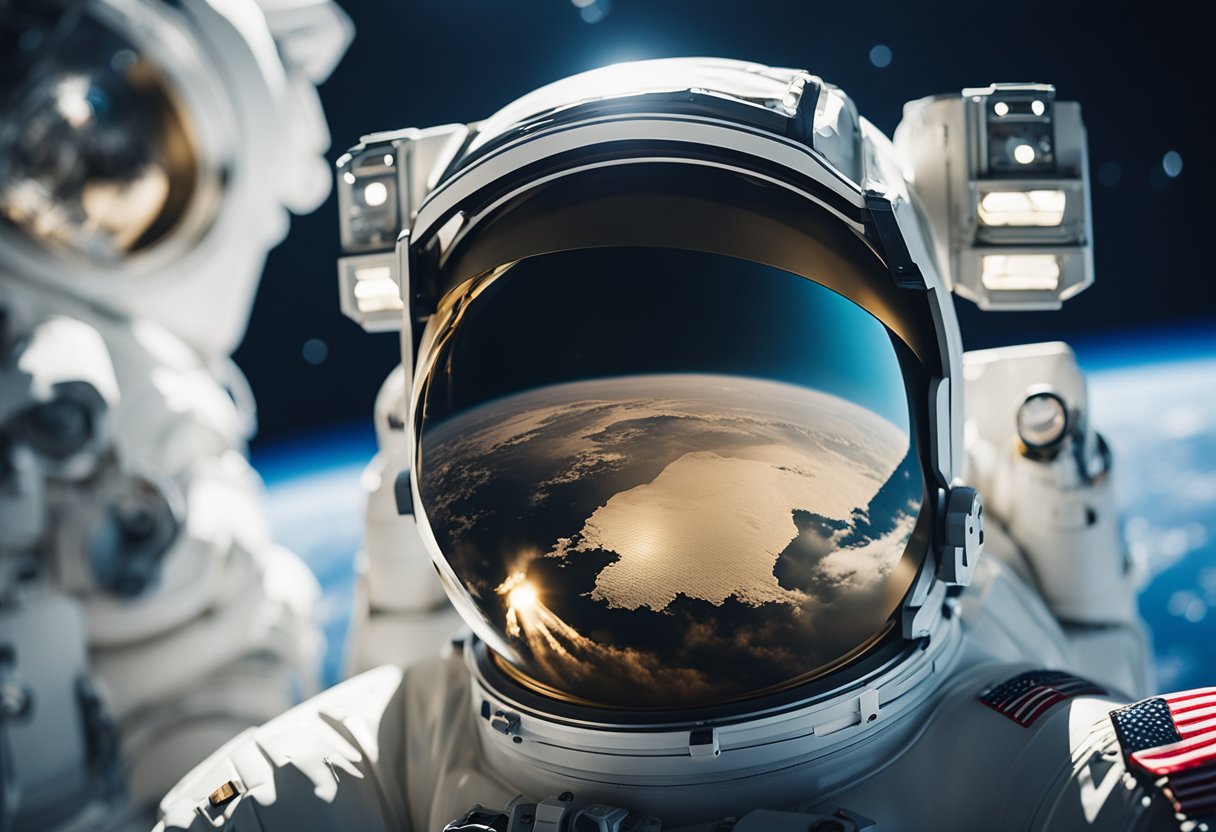
Scientific discoveries through space exploration have significantly expanded our understanding of the universe and our place within it. By stepping beyond our home planet, we’ve gained a unique perspective on Earth and fostered advancements in technology and science. The endeavour to explore space has provided us with critical insights into phenomena such as the formation of planets, the behaviour of celestial objects, and the vastness of the cosmos. These discoveries are not just about understanding the universe but also about leveraging this knowledge for practical applications that benefit humanity.
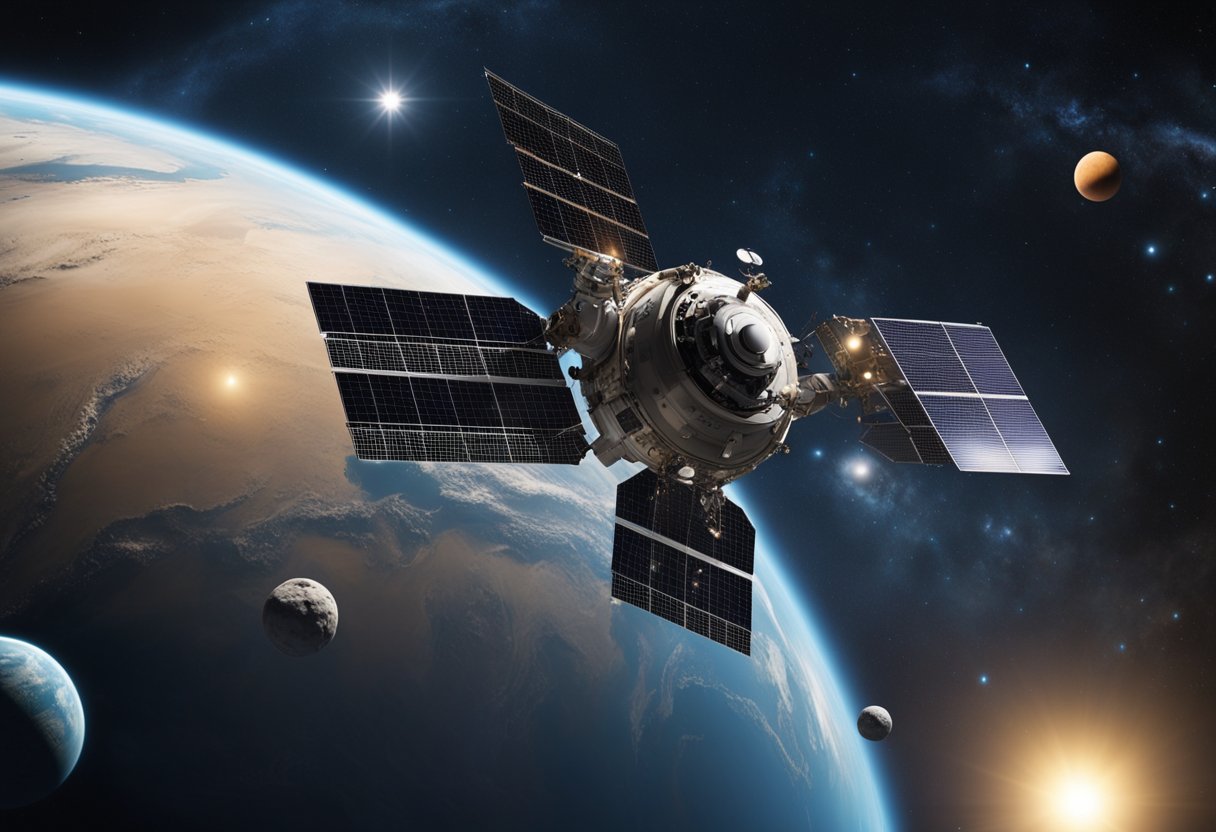
Space exploration has been instrumental in driving innovation. The technologies developed to traverse the cosmos have found their equivalents in daily applications, such as satellite communications and weather forecasting. Moreover, the collaboration between nations in space exploration efforts has highlighted the capacity of international partnerships to push the boundaries of what we can achieve. From historical milestones, such as the Apollo lunar landings, to the International Space Station, each step in our space journey has laid the groundwork for the next leap in our cosmic quest.
As we explore the annals of space exploration, we uncover pivotal moments that defined our journey to the stars. These milestones recount the fierce competition between superpowers, showcase the courage of extraordinary individuals and present a testament to the unmatched spirit of international collaboration. Let’s examine key periods that have sculpted our celestial odyssey.
The Space Race was a period marked by a fierce competition between the Soviet Union and the United States. It was a palpable expression of the Cold War, where each nation sought to prove its supremacy through technological and exploratory achievements in space. The Soviets struck first, sending Yuri Gagarin into orbit in 1961, making him the first human to journey into outer space. This was soon followed by the United States through NASA‘s efforts, resulting in Neil Armstrong taking his monumental “giant leap for mankind” onto the lunar surface in 1969.
Among the pantheon of astronautical pioneers, two figures stand out above the rest. Yuri Gagarin, a Soviet cosmonaut, became an international hero and a symbol of the Soviet Union’s early dominance in space exploration. His historic Vostok 1 mission placed him in the annals of history as the first person in space. In a similar vein, Neil Armstrong‘s iconic Apollo 11 mission under the aegis of NASA is revered, as he was the first person to set foot on the Moon. Armstrong’s legacy is a testament to the relentless pursuit of human space exploration.
In the years following the Space Race, international cooperation has become a cornerstone of space exploration. This is exemplified by the International Space Station (ISS), a joint effort that has brought together space agencies from the United States, Russia, Europe, Japan, and Canada. The ISS stands as a beacon of unity, orbiting about 250 miles above our planet, serving as a laboratory for ground-breaking microgravity research. Our collaborative efforts have proven that when we work together, our potential knows no bounds.
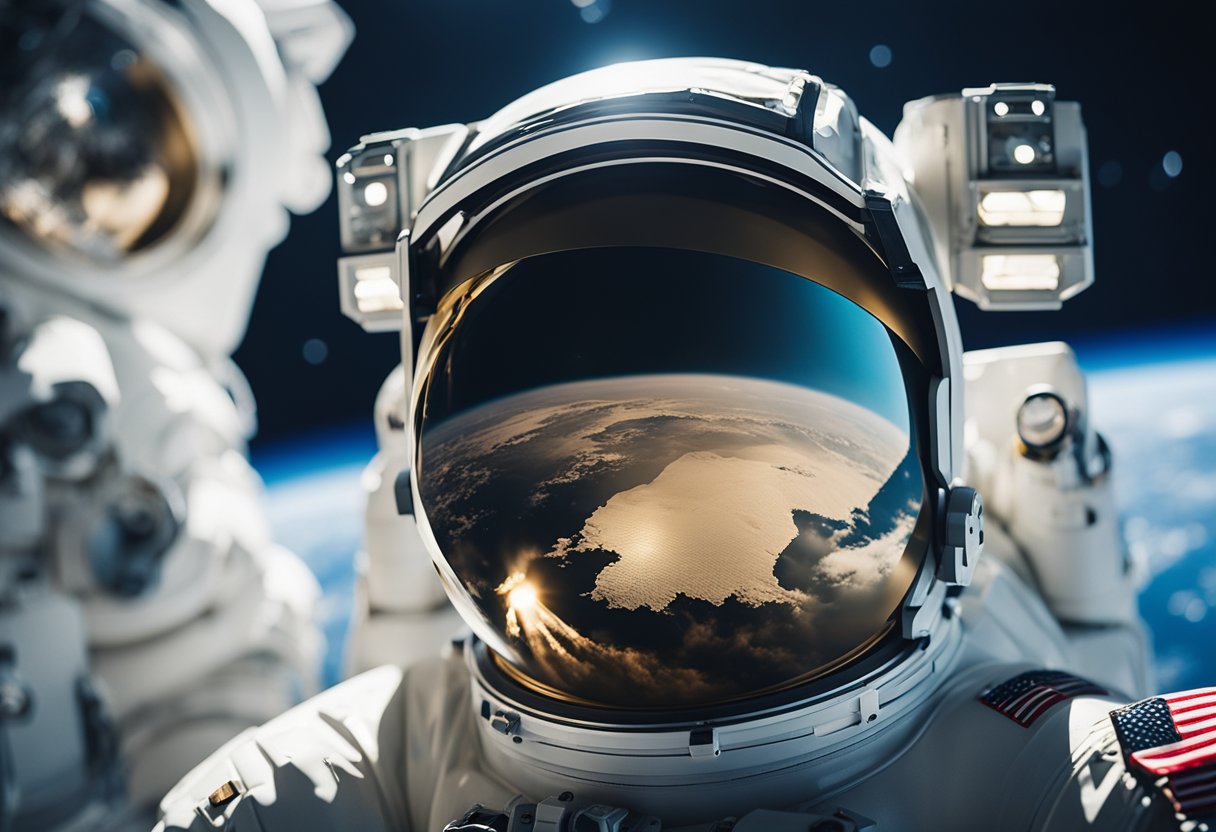
In this section, we examine the prime entities in the arena of space exploration, focusing on their distinct contributions and developments.
NASA (National Aeronautics and Space Administration) continues to be a pivotal force in space research and exploration. With missions like Perseverance probing Mars and the James Webb Space Telescope intent on peering deeper into the universe’s origins, NASA sets a high bar for scientific discovery.
The European Space Agency (ESA) is a collaborative powerhouse, uniting diverse member states to achieve spectacular feats in space. Their ambitious ExoMars programme seeks to unravel the Red Planet’s mysteries, contributing significantly to our collective knowledge.
China and India are swiftly ascending as key players in space exploration. China’s Tiangong Space Station marks its tenacious presence in low Earth orbit, while India’s Aditya-L1 Mission aims to broaden our understanding of the Sun, demonstrating the increasing global dynamics of space endeavours. Canada and Japan also make robust contributions, with agencies like the Canadian Space Agency and JAXA endorsing vital missions and technological advancements that enrich our space-faring capabilities.
Our examination of these agencies uncovers a competitive yet united quest for knowledge and discovery beyond our world, underlining the grandeur and potential of humanity’s reach into the cosmos.
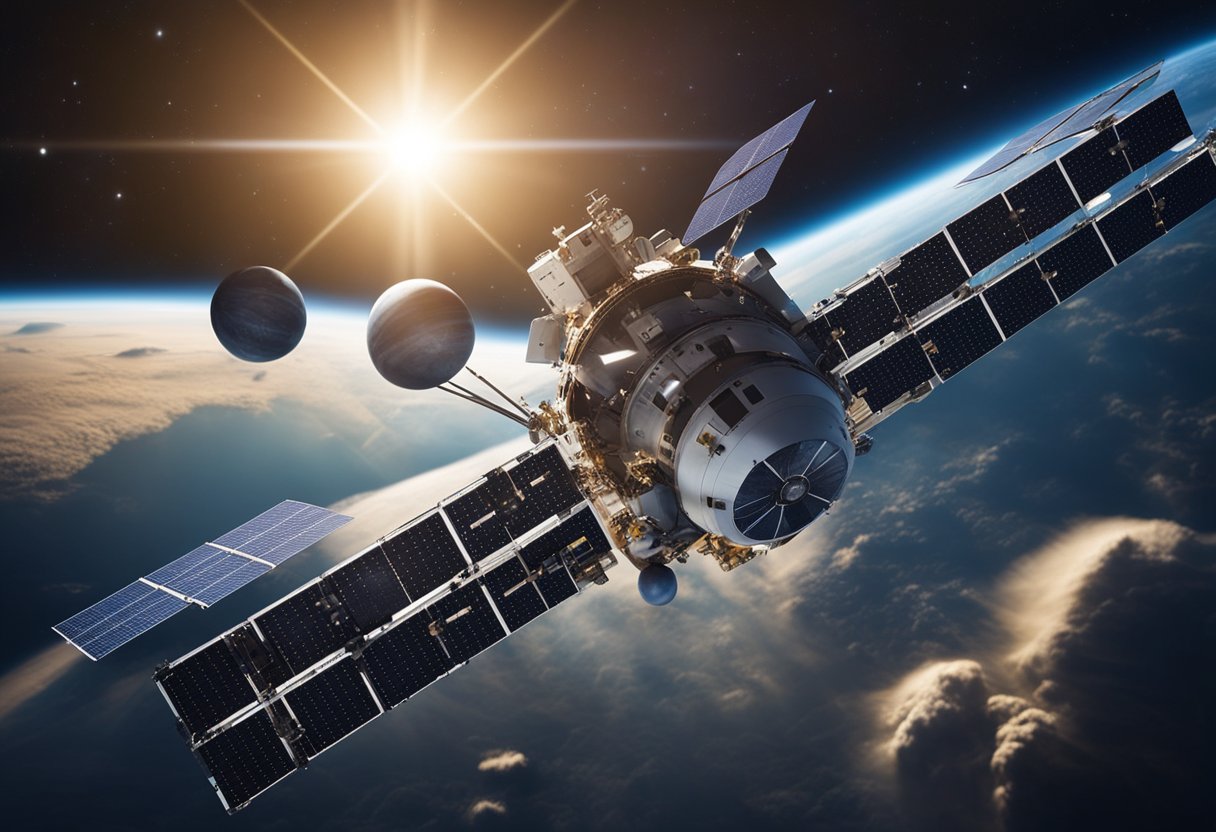
In the expanse of space exploration, certain spacecraft and satellites have been pivotal in our quest for knowledge. These instruments have provided us with unprecedented views of the cosmos and invaluable data on our solar system and beyond.
Since its launch in 1990, the Hubble Space Telescope has been one of the most versatile tools in astronomy. It has captured stunning images of distant galaxies, nebulae, and other celestial phenomena, contributing to our understanding of the universe’s expansion and the existence of dark matter and dark energy.
The James Webb Space Telescope, Hubble’s successor, promises to peer even further into the universe’s history. It’s designed to observe high redshift objects that are too old and too distant for Hubble to see, aiding in our search for the earliest galaxies that formed after the Big Bang. James Webb’s advanced infrared capabilities make it a powerful tool for studying the formation of stars and planets.
Launched in the 1970s, the Voyager probes have become synonymous with the human spirit of exploration. Voyager 1 and 2 have provided us with the first detailed images and data of Jupiter, Saturn, Uranus, and Neptune, revealing moons, rings, and magnetic fields. Their mission has since extended to interstellar space, carrying messages from Earth on golden records.
The Pioneer programme, with Pioneer 10 and 11, paved the way for the Voyagers. They were among the first spacecraft to traverse the asteroid belt and make direct observations of Jupiter’s environment, enhancing our comprehension of the Jovian system.
Robotic spacecraft like Cassini-Huygens have revolutionised our understanding of other celestial bodies. The Cassini mission to Saturn provided a wealth of information about the planet’s rings, atmospheric conditions, and moons, including Titan, where the Huygens probe made an historic landing, unveiling a complex, prebiotic chemistry.
Such robotic explorers often carry an array of communication equipment, crucial for relaying data back to Earth. The insights gained from these missions guide our expectations for future exploratory targets and missions, which you can follow through platforms like SpaceVoyageVentures.com, that explores the realm of space tourism and its intersection with scientific discovery.
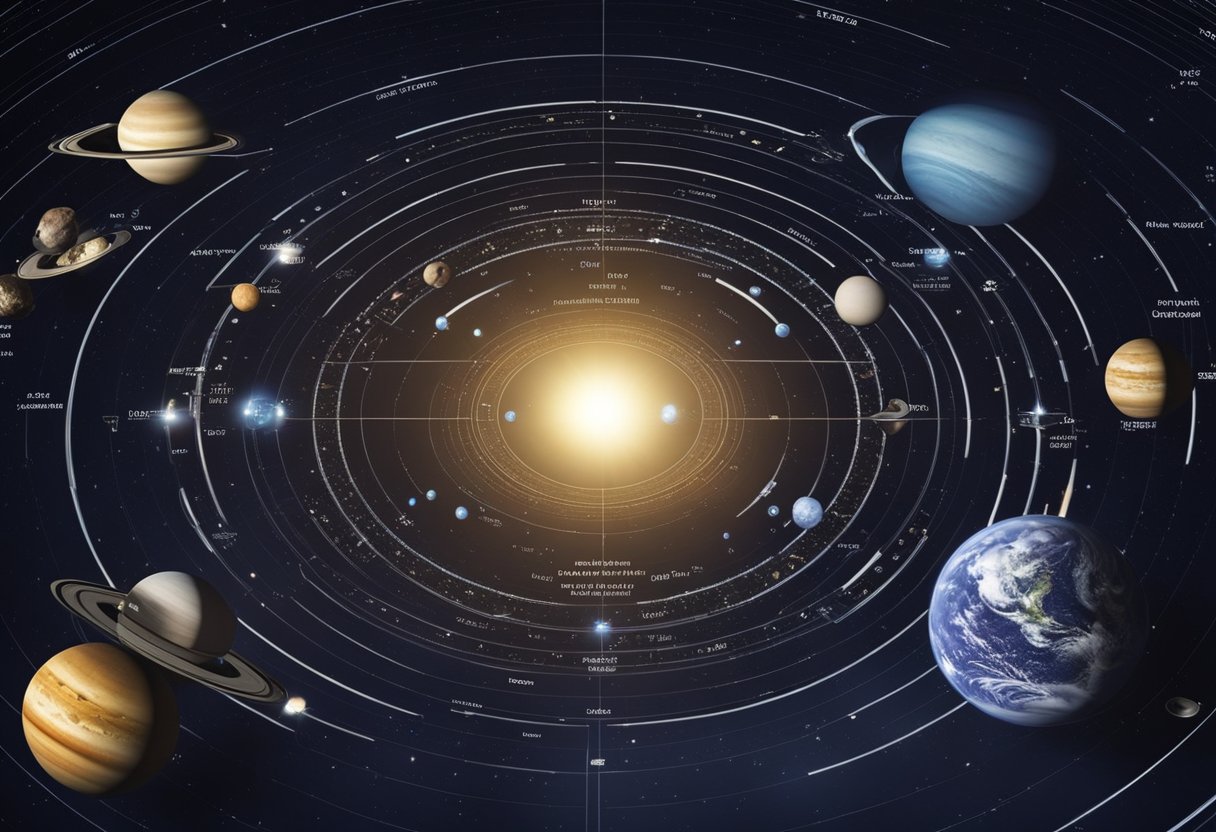
Exploration of the Solar System has vastly expanded our understanding of the neighbouring planets and celestial bodies, revealing details about their composition, atmospheres, and potential for future missions.
Our Moon harbours secrets essential to understanding Earth’s own history. Recently, missions like NASA’s Lunar Reconnaissance Orbiter have provided in-depth topographical data of the lunar surface, confirming the presence of water ice in permanently shadowed craters. Mars, known as the Red Planet, has been a focal point for discovery. Rovers such as Curiosity and Perseverance have found evidence of ancient rivers and lakes, hinting at Mars’s wetter past.
Jupiter’s massive size and powerful magnetic field have always intrigued us. Insights from missions such as Juno have revealed a complex interior and dynamic atmosphere. Saturn’s extensive system of rings and moons, including Titan, an Earth-sized moon with a dense atmosphere, has been studied in detail by the Cassini spacecraft.
The distant realms have been unveiled by long-term explorations, elucidating the complexity of outer planet moons and their rings. Saturn’s rings, for example, are constituted of countless small ice particles, while its moons like Titan present a compelling case for further exploration of prebiotic chemistry in space.
Delving into the cosmos, we unveil profound secrets about the universe. Our focus in this section lies in the exploration beyond our solar system and the enigmatic phenomena of black holes and neutron stars.
Our quest to understand the universe has led us to confirm the existence of exoplanets, with some being startlingly similar to Earth. The James Webb Space Telescope has recently verified an exoplanet, LHS 475 b, nearly identical in size to our planet. This milestone illustrates our capability to identify celestial bodies that could potentially harbour life.
Black holes remain amongst the most compelling subjects in astrophysics. We’ve witnessed the gravitational pull of these cosmic behemoths warp the fabric of space-time itself. Moreover, the study of neutron stars, remnants of colossal supernovae, has provided us with critical insights. These dense, spinning remnants not only defy the very limits of matter but also offer clues about the universe’s extremities. The phenomena of black holes absorbing space rocks and altering asteroid paths are just a fraction of the dramatic, high-energy events that shape our understanding of the cosmos.
By analysing such profound and enigmatic entities, we deepen our comprehension of the universe and our place within it. As we continue to monitor these cosmic wonders, organisations like SpaceVoyageVentures.com foster public enthusiasm by charting the course for future space tourism, promising an intimate glimpse at the majesty of space firsthand.
Space exploration has precipitated numerous technological advancements, particularly in the sectors of orbital flight, docking, communication, and navigation. These innovations have not only propelled our space endeavours forward but also permeated various facets of daily life on Earth.
Our achievements in orbital flight have been the cornerstone of our capacity to maintain a continuous human presence in space, particularly on the International Space Station (ISS). The development of sophisticated docking mechanisms, such as the NASA Docking System, has allowed for the assembly of the ISS and is integral to current and future deep space exploration missions.
Orbital flight advancements:
Notable docking research and developments:
Communication and navigation systems are crucial for the successful operation of orbital missions. The geostationary satellites employed for these purposes provide critical services, such as global communications networks and GPS for navigation and timing.
Communication arrays:
Navigation advancements:
We continuously seek to innovate and improve these technologies, pushing the boundaries of what’s possible in space and what we can achieve back on our home planet. For example, commercial entities like SpaceVoyageVentures.com are now exploring how these technologies might support the nascent space tourism industry, illustrating the wide-ranging applications of our space activity.
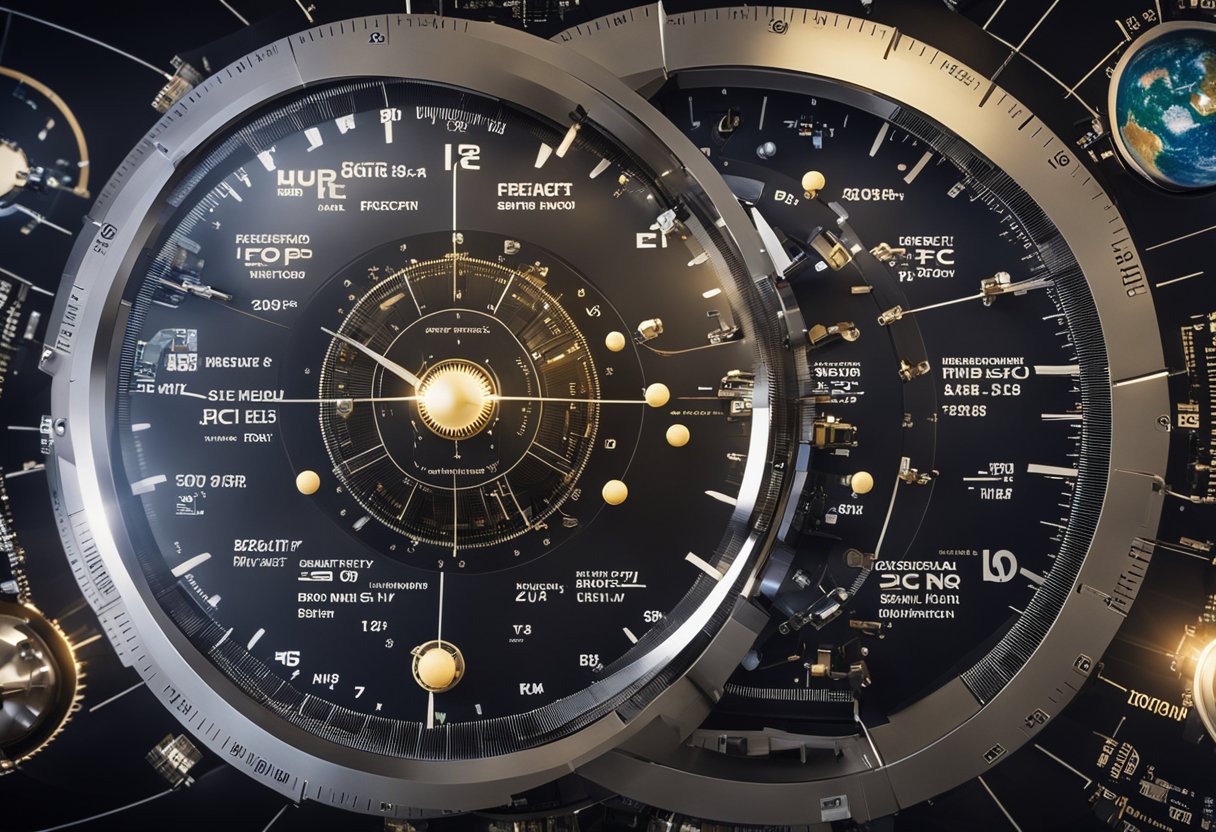
Our efforts in space research have made substantial contributions to Earth sciences, particularly in enhancing our understanding of meteorology and climate science. Through dedicated research and observation, we have gathered vital data about Earth’s atmosphere that inform and improve weather forecasting on our planet.
Space exploration has greatly advanced meteorology. Satellites orbiting Earth provide continuous observation of weather patterns, which is critical for accurate weather forecasting. This data contributes to early warning systems that protect lives and property from natural disasters. Furthermore, these celestial vantage points offer insight into large-scale phenomena like El Niño and the polar vortex, influencing regional and global climate patterns.
Space-based research has been instrumental in studying the composition and behaviour of Earth’s atmosphere. For example, instruments aboard the International Space Station have identified changes in the concentration of carbon dioxide, which plays a significant role in Earth’s warming climate. By monitoring these greenhouse gas concentrations from space, we can better understand human impacts on our environment and guide policy for carbon emission reductions.
Our commitment to space science mirrors that of early space tourism initiatives observed on SpaceVoyageVentures.com, which explores not only the commercial aspects of space but also the invaluable scientific discoveries that benefit us here on Earth.
In this exploration of the cosmos, we’ve unveiled extraordinary celestial phenomena that have reshaped our understanding of the universe. Through astrophysical studies, we’ve identified and investigated the dynamics of pulsars and experienced the impact of cosmic rays and charged particles, furthering our grasp on the force of gravity.
Pulsars, the lighthouses of the cosmos, are rapidly spinning neutron stars emitting beams of electromagnetic radiation observable as pulses. These incredibly dense remnants of supernova explosions serve as cosmic clocks, aiding in our scrutiny of spacetime. We’ve detected pulsars that rotate hundreds of times per second, providing insight into the extremes of physical laws.
Cosmic rays are high-energy particles from outer space that bombard the Earth. We’ve learned that these particles are capable of producing secondary particles upon collision with the Earth’s atmosphere, which can be detected and studied. Pulsars are suspected to be sources of some of these high-energy particles due to their strong magnetic fields and rapid rotation.
Our investigation into charged particles, specifically the stream known as solar wind, has revealed fascinating interactions with planetary magnetic fields. These interactions can create captivating visual spectacles such as auroras, seen around the polar regions of Earth.
The study of gravity is intrinsic to astrophysics. We’ve utilised pulsars within binary systems to corroborate the predictions of general relativity and measure the distortion of spacetime. The dance of these celestial bodies under gravity’s influence continues to be a source of awe and a tool for probing the fundamental structure of the universe.
Through our endeavours in space exploration, we are continuously expanding our knowledge base and pushing the boundaries of human understanding.
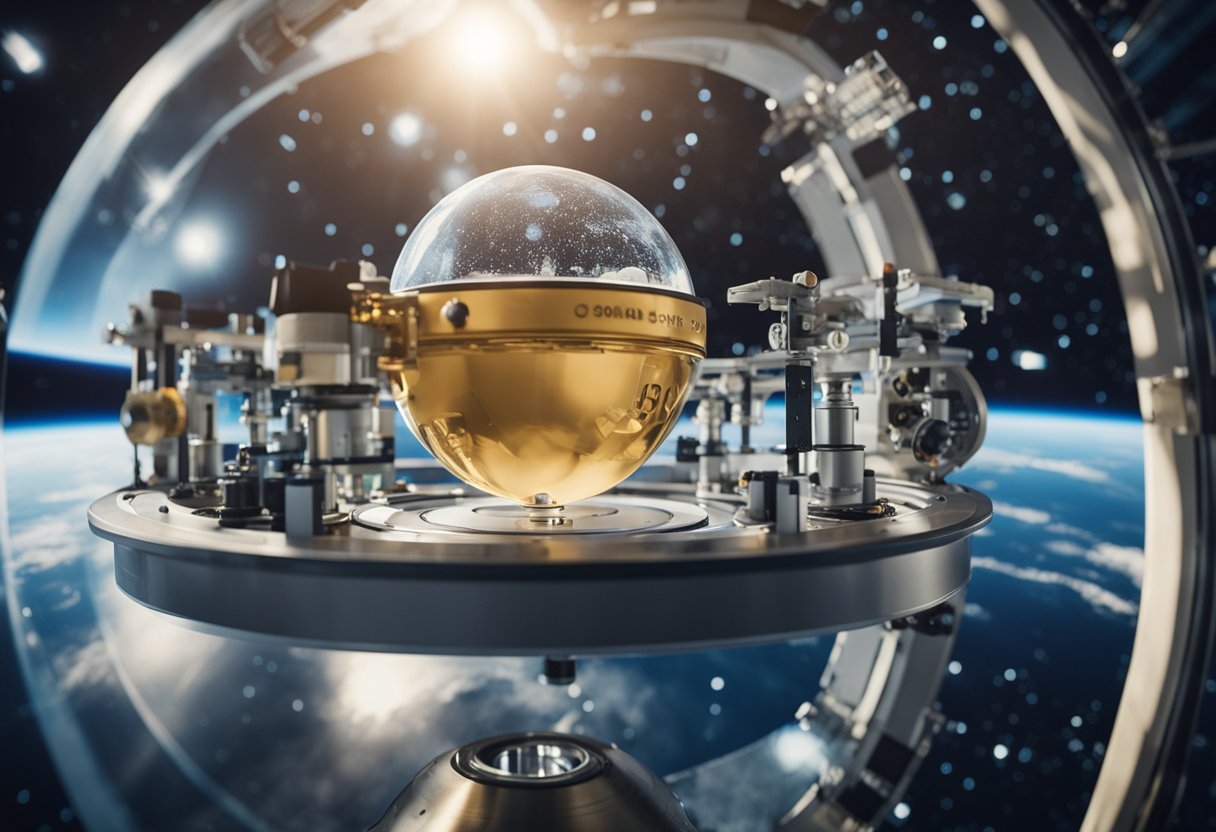
In our pursuit of knowledge, the space environment offers a unique laboratory setting that isn’t replicable on Earth. The absence of gravity allows us to observe the fundamental aspects of both life and physical sciences. Our focus will be on examining the effects of microgravity on human physiology and the novel material science experiments conducted in orbit.
We have observed substantial changes in human physiology under zero-gravity conditions. Researchers closely monitor the cardiovascular, musculoskeletal, and sensory-motor systems of astronauts to understand the gravitational effects on the body. For instance, bone density loss and muscle atrophy are significant challenges faced by crews during long-duration space missions. Studies on astronauts have provided a wealth of data, helping scientists to develop countermeasures such as resistance exercise routines to mitigate these effects.
Space also serves as an unparalleled research setting for material sciences. The microgravity conditions aboard the International Space Station have facilitated experiments ranging from the study of fluid dynamics to the development of better-quality alloys. Investigations into the growth of purer protein crystals for pharmaceutical research have yielded promising results. These advancements not only enhance our space exploration capabilities but also translate into improvements for everyday materials and technologies on Earth.
Our collective efforts in these extreme and controlled circumstances are continuously shaping our understanding of the world and expanding our technological frontiers. As we propel humanity further into the cosmos, the discoveries gleaned from these intense and collaborative undertakings in the space environment will become the foundation stones for not only scientific progress but also potentially for the advent of space tourism, as documented by ventures such as SpaceVoyageVentures.com.
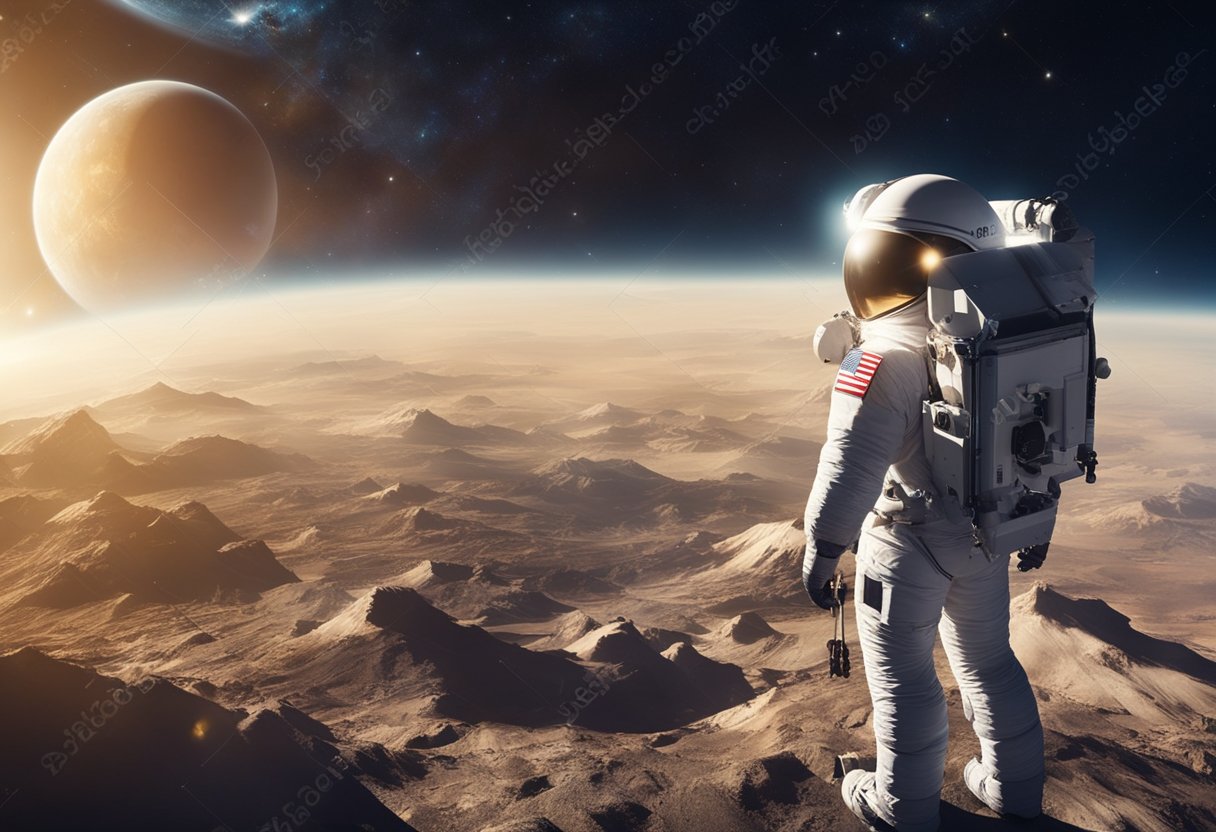
We are witnessing an era where international collaborations are paramount for the advancement of space exploration. Through these partnerships, we harness diversified knowledge and combine efforts for innovative space activities.
In our journey to the stars, the International Space Station (ISS) stands as a testament to the power of global cooperation. Managed by a consortium of sovereign nations, the ISS provides a unique platform for conducting scientific experiments that expand our information about the universe.
Looking ahead, the prospects of space exploration are bound by neither sky nor space but by our imagination and collective will.
Global partnerships and alliances are not just beneficial; they are crucial for the future we envision in space, as stressed by industry experts at summit panels and documented on platforms focusing on international space collaboration. We are part of an incredible, communal venture for knowledge, the fruits of which will be shared by all humanity.
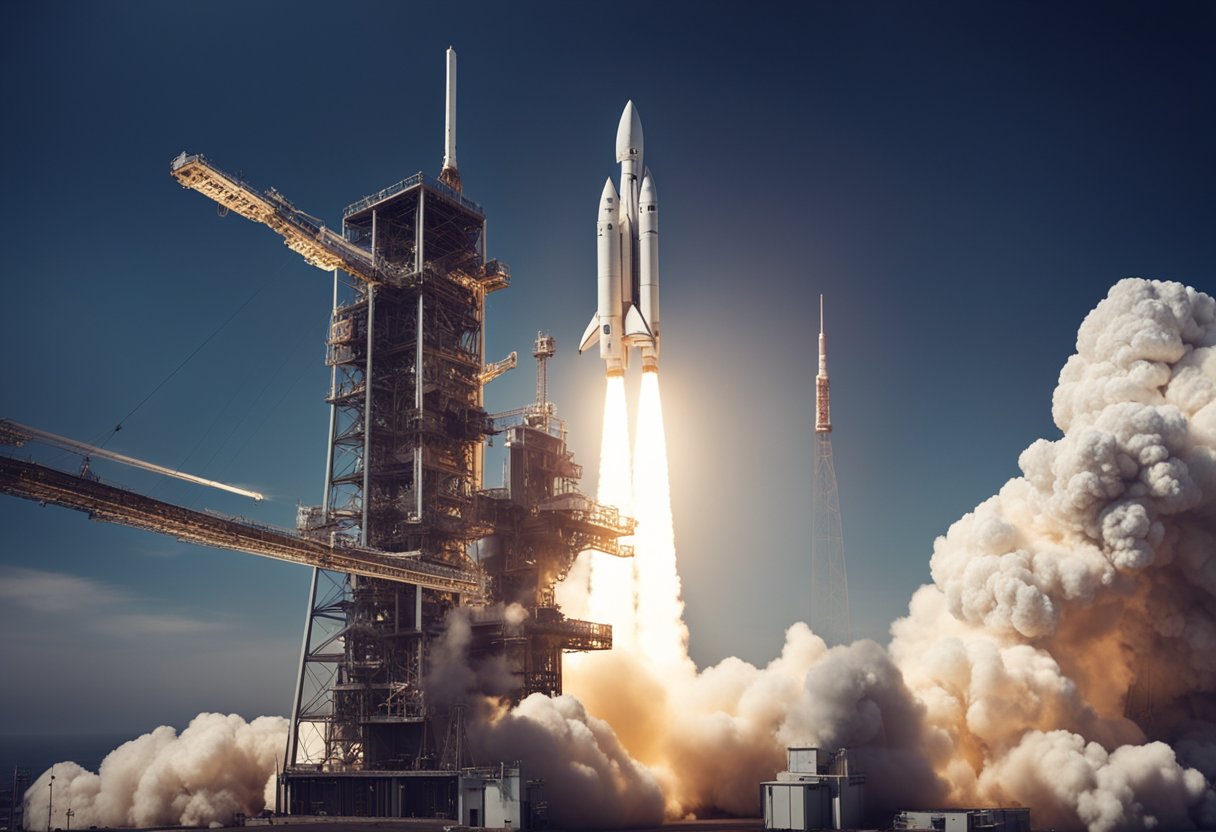
Space exploration has dual benevolence, it illuminates the chasm of our knowledge while simultaneously fuelling the furnace of our commercial enterprise. Our quest for the cosmos is not solely a voyage of discovery but an opportunity to foster an economic force that transcends terrestrial bounds.
Space has burgeoned into a formidable business arena where the private sector and governmental agencies collaborate and compete. Space missions channel into the economy in a multifaceted manner. For instance, we witness a surge in private investment tailored towards the innovation in satellite technology and space logistics. Commercial space economy, with companies like SpaceVoyageVentures.com, is a testament to this trajectory, showcasing the potential for space tourism and habitation. Projects planning to tap into resources at the Lagrange point conjure visions of a future where space could be the ultimate juncture for international trade.
The utilisation of space resources necessitates a robust legal framework. Our incumbent challenge lies in diplomatising space, creating agreements that underline the fair division and utilisation of extra-terrestrial resources. Such frameworks also govern the future of space missions, ensuring that the pursuit of knowledge and business expansion in space transpires within an ethically and legally sound context. The advent of laws and policies will enshrine the rights and responsibilities of entities operating beyond Earth’s atmosphere as we make strides in mining and resource acquisition beyond our blue planet.
In this section, we address some of the most pressing inquiries concerning what we’ve uncovered about the cosmos via recent space missions, the resulting innovations, and the significant scientific discoveries made through the pioneering field of space exploration.
Through recent space missions, we’ve learned about the existence of water in the form of ice on celestial bodies like Mars and the Moon, which has significant implications for understanding the availability of life-sustaining resources beyond Earth. Space missions have also mapped the surface of planets and moons, enhancing our grasp of their geologies and climates.
Research on the International Space Station has led to advancements in telemedicine, water purification systems, and even exercise equipment designed for use in microgravity. These innovations are now benefitting life on Earth, particularly in remote and resource-limited environments.
In the past decade, one pivotal discovery through space exploration was the confirmation of thousands of exoplanets, which are planets orbiting stars beyond our solar system. This has dramatically expanded our understanding of potential habitable zones and the diversity of planetary systems.
Over the last five years, our understanding of space phenomena has progressed with recognising the intricacies of cosmic events such as black holes colliding and the detection of gravitational waves. These discoveries have provided new insights into the fabric of spacetime and the dynamics of galaxies.
Technologies developed for space exploration, such as satellite communication, GPS, and Earth observation systems, have had profound impacts on navigation, weather forecasting, and global telecommunications.
Space exploration has contributed to advances in fields like materials science, with the development of lightweight, durable materials. Improved robotics and autonomous systems used in space missions have also found applications in surgery and manufacturing on Earth.